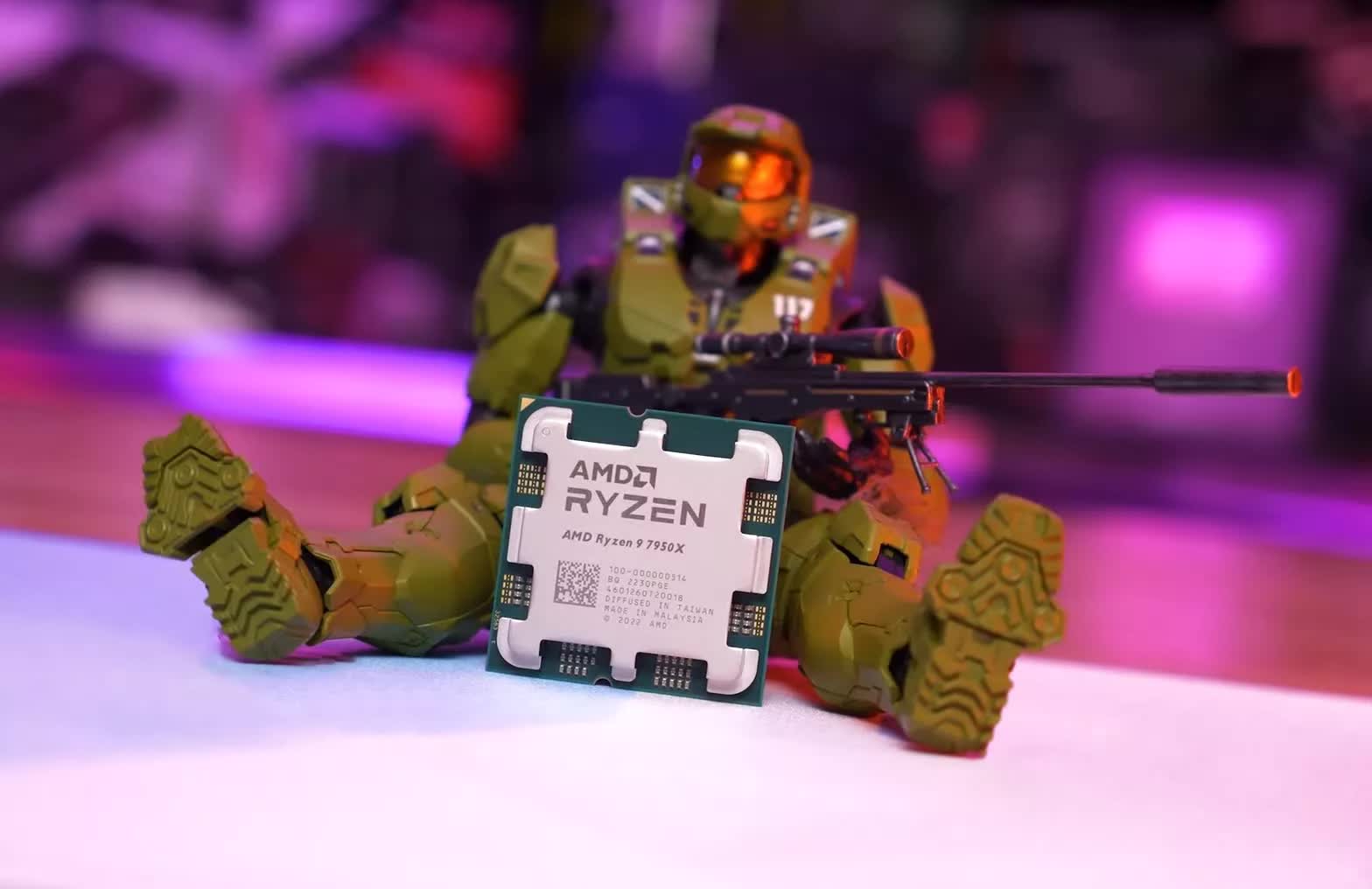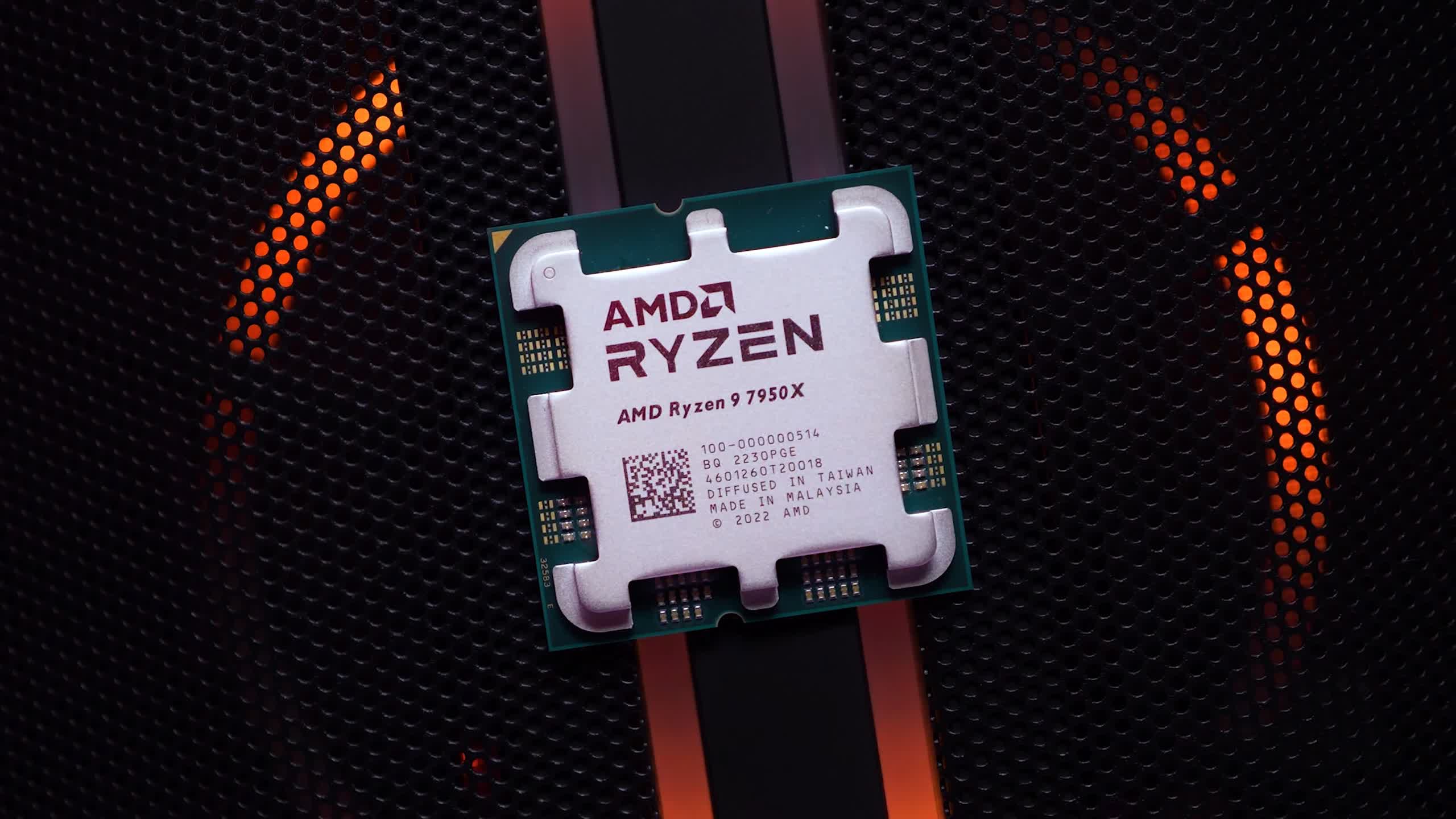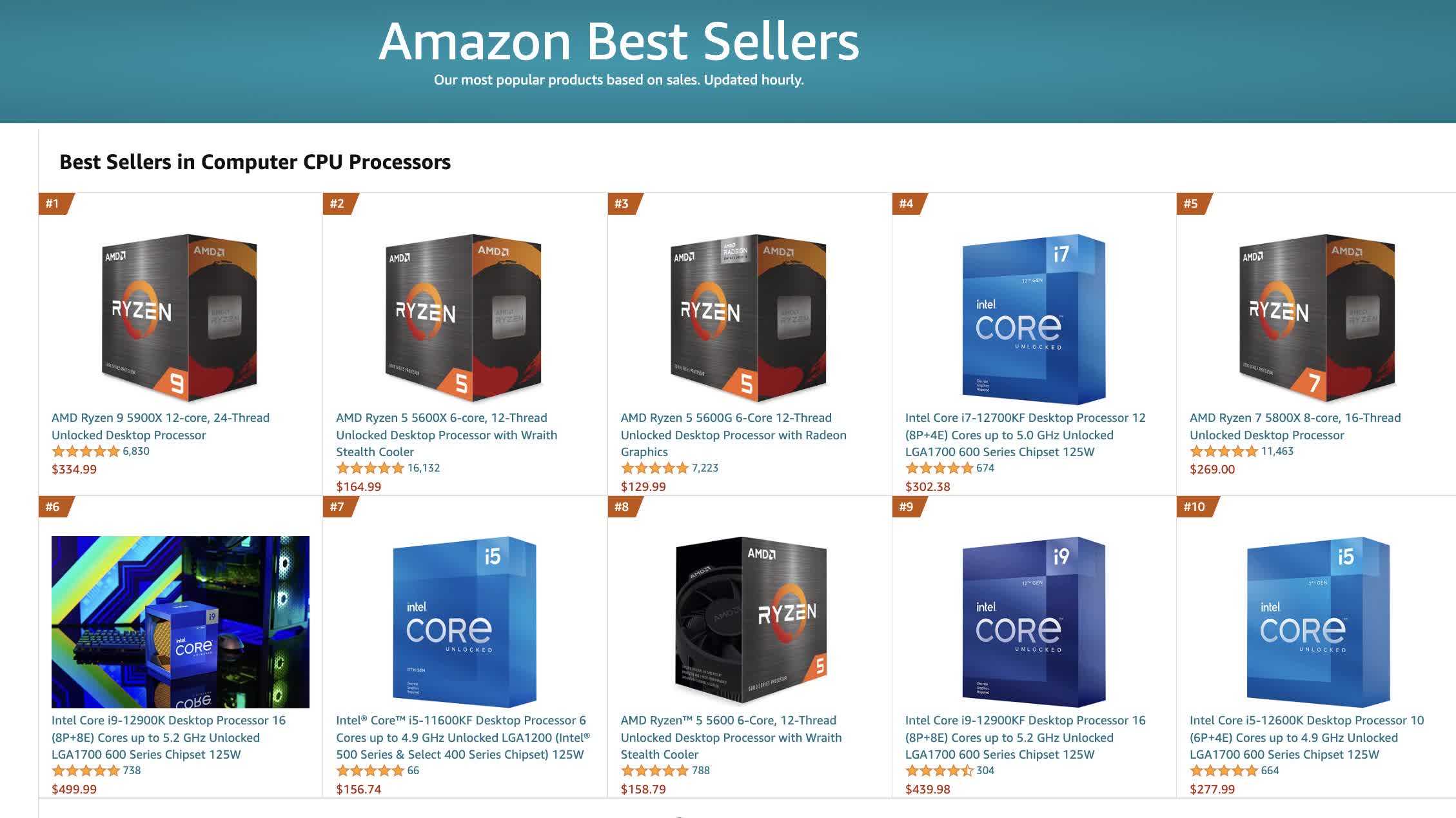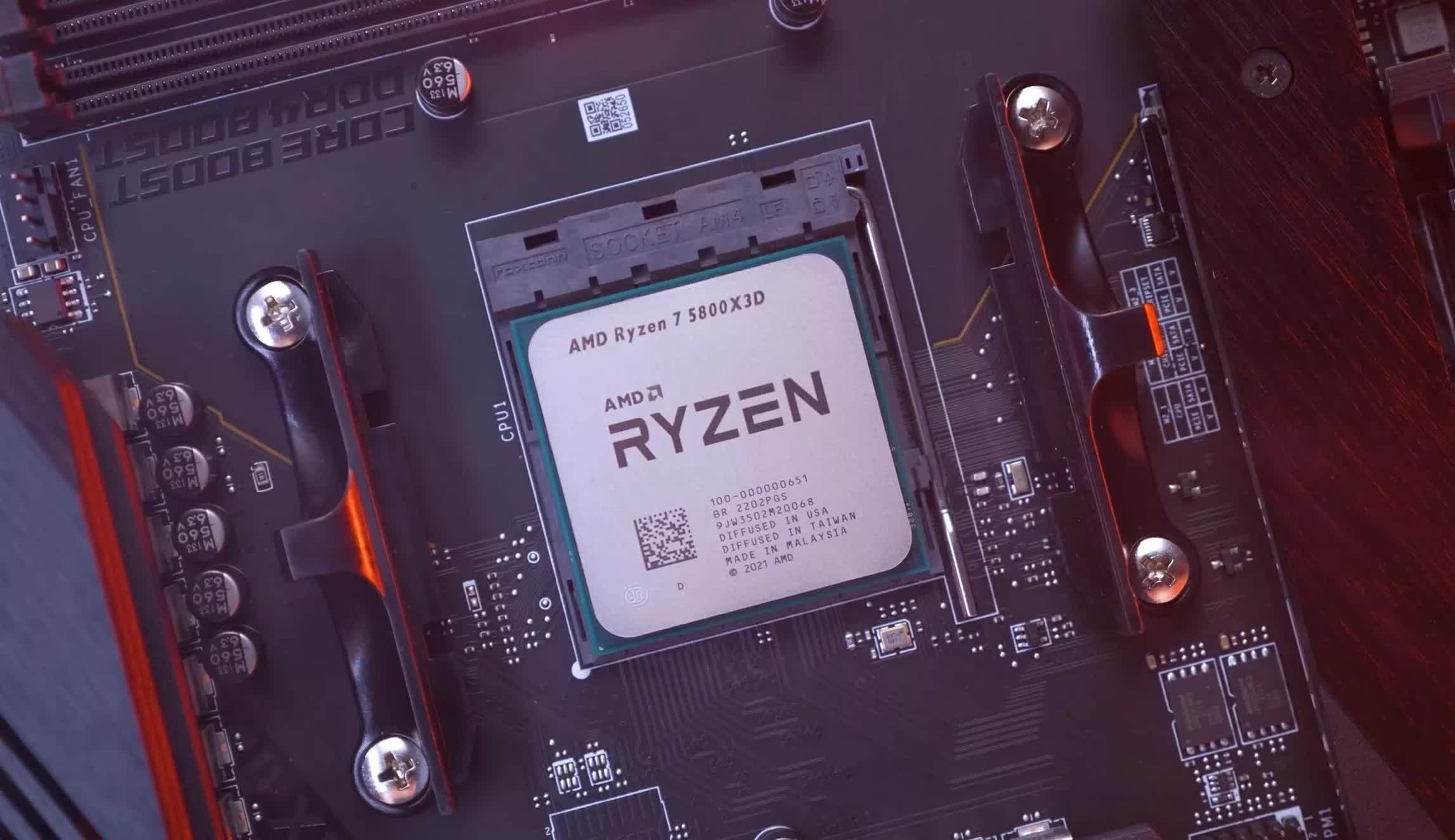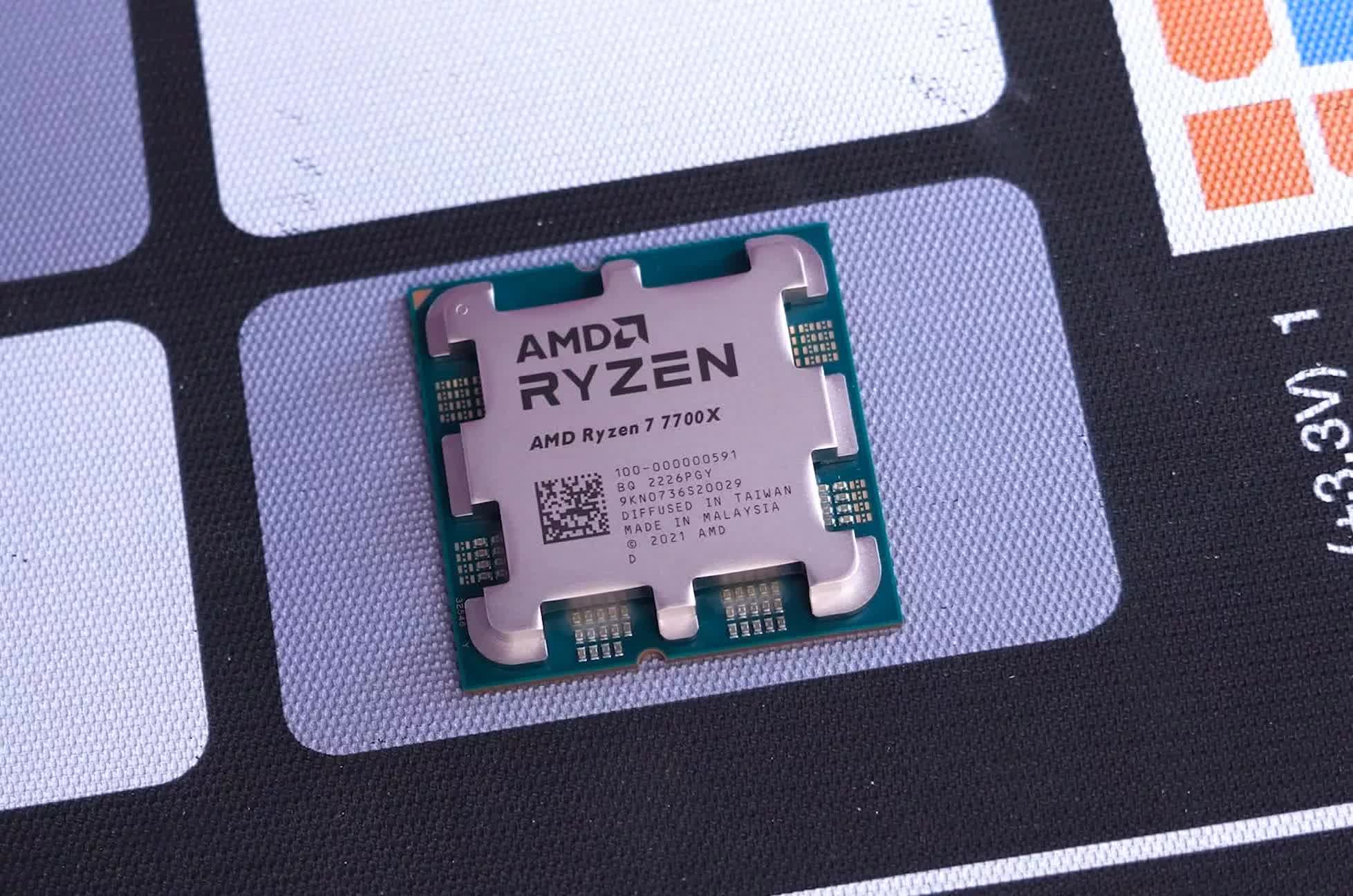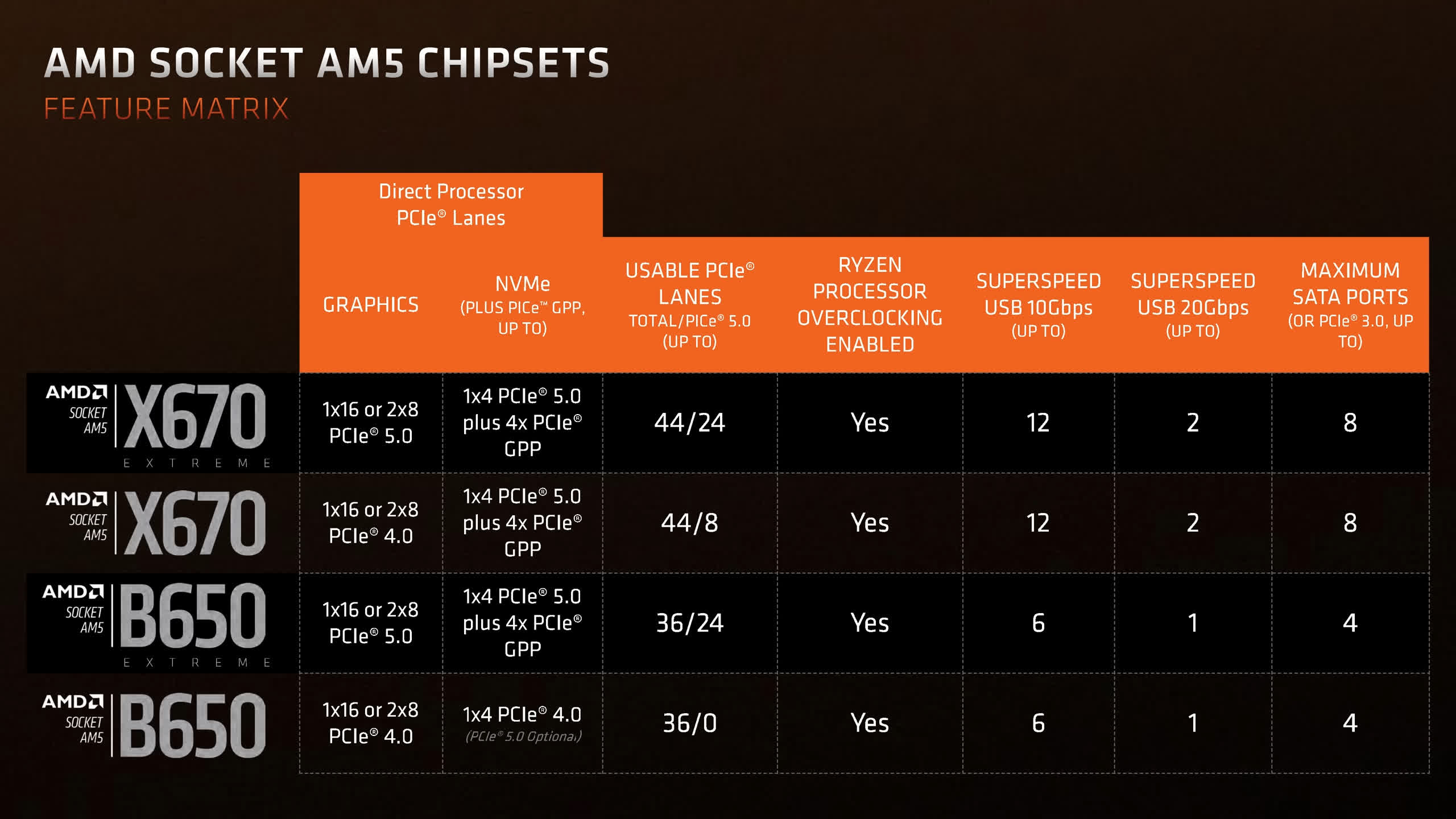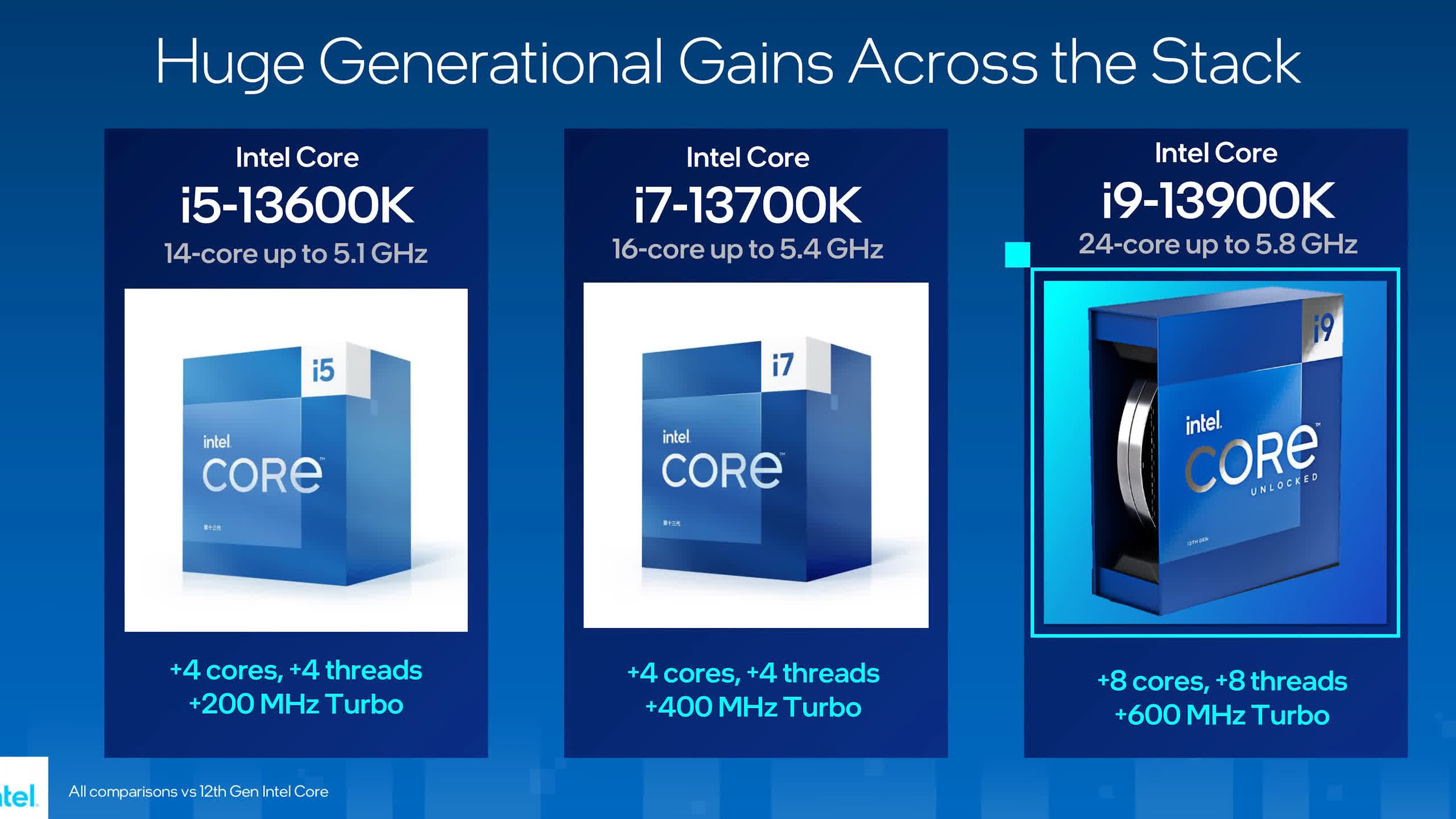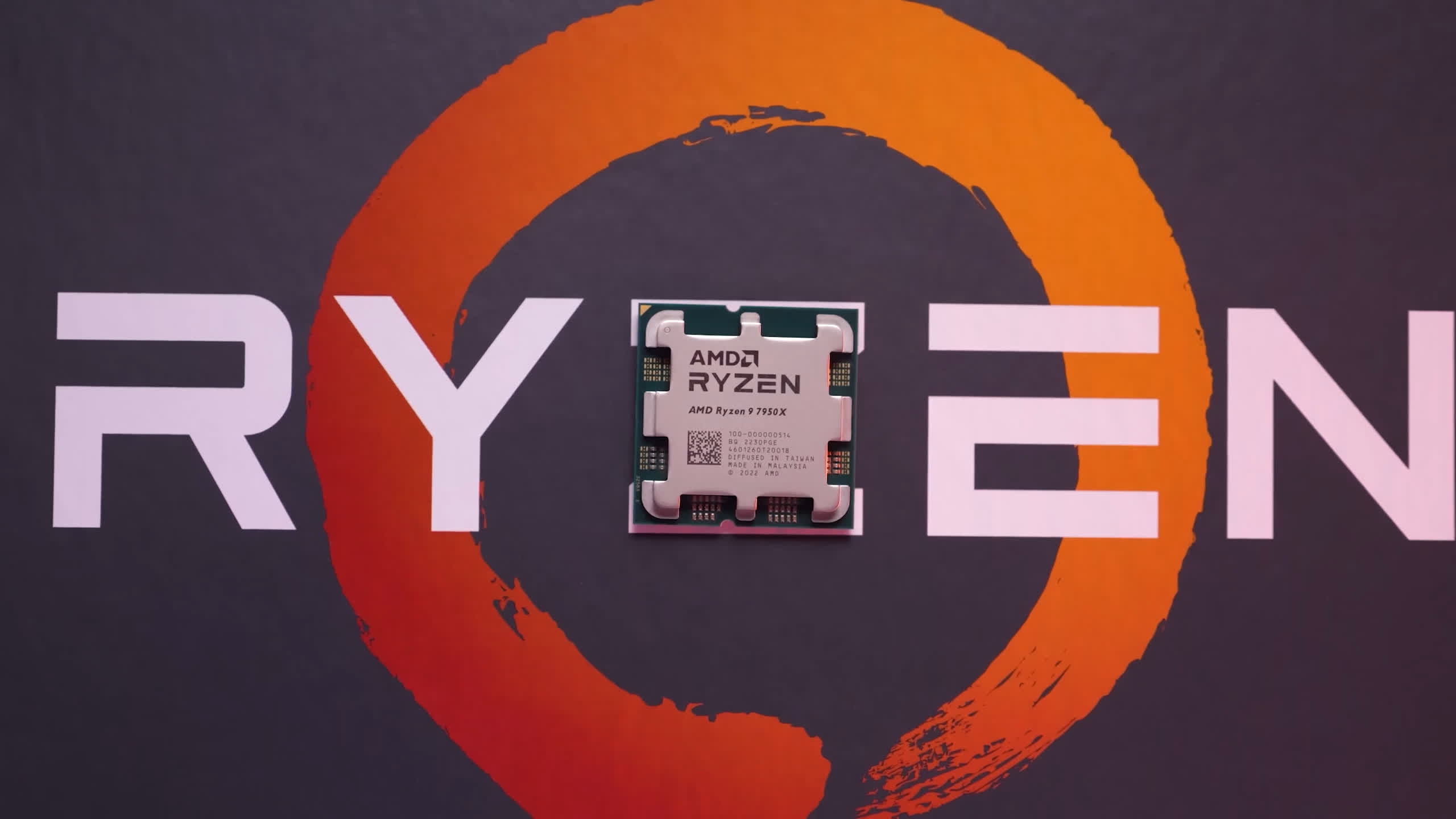The big picture: As you know, AMD launched their new Zen 4, Ryzen 7000 processors about two weeks ago now and hopefully you've all seen our reviews of the four models. There are a number of strengths to these new parts, including performance – however, AMD is facing a bit of a hurdle since their introduction, and that is convincing people to actually buy them.
We've heard from multiple sources that sales for Zen 4 processors are weaker than expected, even factoring in current market conditions, so let's talk about that and why this might be occurring.
AMD processors remain very popular and continue to outsell Intel equivalents in the enthusiast DIY market. It's estimated AMD currently has a ~70% share of desktop CPU sales with some variation depending on the source you look at, however the vast majority of these parts, even in the days after AMD's Zen 4 launch are for older AM4 processors.
One excellent source is TechEpiphany on Twitter, who catalogues the sales volumes of AMD parts from Mindfactory, and while the data is strong for AMD as a whole, it's not great for AM5. In launch week, 78% of AMD sales were for AM4 parts, and in the week following, that increased to 94%. While these figures for AM5 are better than what Intel achieved for their Alder Lake launch last year, AM5 sales are slow compared to the previous Zen launches.
One retailer that we spoke to said that comparing 7000 series to 5000 series, it feels like it will take them months to sell the volumes of Zen 4 chips they sold in just a few hours at the Zen 3 launch.
" Mainboard Retail Sales Week 40 (mf)
--- TechEpiphany (@TechEpiphany) October 9, 2022
AMD: 1970 units sold, 55.65%, ASP: 146.79
Intel: 1570, 44.35%, ASP: 214.56
AMD revenue: 289'171, 46.19%
Intel: 336'860.1, 53.81%
Bestseller: MSI MPG B550 Gaming Plus
(AM5: Gigabyte X670 AORUS ELITE AX)#AMD #Intel #AMDRyzen pic.twitter.com/HHVpa8acxL
Across all the retailers, we've been told the Ryzen 9 7950X is comfortably the highest selling part, followed by the 7700X, with much weaker sales for the other two models. We've been told the launch is "top heavy," meaning that buyers of AM5 are largely interested in premium high-end builds rather than budget models. This contrasts to a typical launch and typical CPU sales, where budget and mainstream offerings are usually the most popular by a substantial margin. Words we heard to describe the launch include things like "disappointing" and "slow."
Another reliable indicator for CPU sales is Amazon's best selling processors list where we observe the same theme: a domination by AMD, but unimpressive results for Zen 4. The top selling Zen 4 part right now is the 7950X in 18th position, behind the 5950X and several Intel parts including the 12700KF and 12900K. No other Zen 4 part ranks in the top 30. For a period last week Microcenter were offering free DDR5 memory kits with the purchase of some Zen 4 CPUs.
But why are sales worse than expected?
Global recession and strong AM4
One key factor is the economic climate worldwide. We are in a recession, which is weakening demand for PC hardware substantially. One retailer we spoke to was keen to stress that while Zen 4 CPU sales are weaker than expected, even in the current climate, the entire business right now was slower than normal for this time of year.
AMD was feeling the pinch before the launch of Zen 4. They missed their revenue guidance for Q3 by $1 billion, a big number, as client revenue was down 40% year on year. This was a standout number in their report given that datacenter sales and gaming sales were both up year on year, and at worst flat compared to last quarter. There isn't a strong demand for consumer CPUs at the moment.
But that's not the entire story. Another factor to consider is the strength of the AM4 platform and its longevity. A significant portion of desktop PC owners have an AM4 system, so after years of strong sales for Zen processors, many of these owners have built systems primarily with gaming in mind.
As discussed in our Zen 4 reviews, these new Ryzen 7000 parts don't present a strong value proposition to existing AM4 owners - the cost to switch platforms is high, and the level of performance on offer for gaming isn't all that different to the AM4-compatible Ryzen 7 5800X3D.
Unless you wanted to future proof your system for some reason, there's no compelling reason to buy Zen 4 over the 5800X3D that would be drop-in compatible with any AM4 motherboard you might already own.
This leads to a situation where Zen 4 is targeting a smaller potential customer base than with previous Zen releases. Gamers would only consider Zen 4 if they were coming from an older platform, largely Intel platforms in that case, or possibly first or second gen Ryzen if they wanted to go super high end and ensure future proofing. The other main target is people building an entirely new system where you're not thinking about what hardware you have right now. And then, of course, there's the small market of premium shoppers that must have the best hardware – or are interested in a system that's primarily for productivity workloads, in which case the Ryzen 9 7950X is an excellent choice.
With AMD targeting high-end shoppers, it's not a huge surprise that Zen 4 hasn't captured the attention of those that would normally spend ~$200 on their CPU – even without factoring in the AM5 platform upgrade costs. The Ryzen 5 7600X doesn't come close to tickling the interest of budget builders, it's worse value than the Ryzen 5 5600X right now, which can be had for less than $200, not to mention the 5600 non-X chip which is just $160. Put simply, the Ryzen 5 7600X is too expensive for a typical "mainstream" Ryzen 5 option. Pretty much the entire line-up is too expensive to consider for a typical gamer, which are most DIY PC builders.
Motherboard pricing is insane
A bigger issue than the price of the CPUs and perhaps a driving factor to poor AM5 sales is the cost of the motherboards. In my opinion, the pricing for X670 series motherboards is pretty outrageous. The cheapest board available and the only board below $250 after factoring in rebates is the ASRock X670E PG Lightning, and there are only four other boards priced below $300 (one from each main motherboard brand).
Out of 23 boards listed on Newegg, only five are priced below $300. The majority of motherboard sales – and pretty much all the top sellers on Amazon – are motherboards priced below $200. There isn't a single board right now in that price category for Zen 4 buyers, which is a big barrier of entry. This means the absolute cheapest AM5 CPU plus motherboard combination costs $550, not including DDR5 memory. That's a tough ask for someone with an existing gaming PC, when the 5800X3D (a potential drop-in upgrade) is just $420.
The average asking price for an AM5 motherboard on Newegg is $506, with a median of $470. Crazy stuff. We know there are a few "whale" motherboards in there for stupidly expensive builds (e.g. the MSI Godlike and Asus Crosshair Extreme), but the obsession with motherboards above $450 is concerning. Asus has seven boards priced at or above $450, compared to just four below that. MSI has three above $450, and one below. Gigabyte two above and one below. Only Asrock has more boards in the lower price segment.
A CPU launch requiring a new platform simply isn't going to be successful when most available motherboards are that expensive. AMD B650 and B650E boards can't arrive fast enough, with many models just hitting store shelves as we are writing this, hopefully offering great options below $200, and let's be honest the features of these boards will be more than sufficient for most buyers.
X670 does offer more I/O connectivity, including more PCIe lanes, more USB ports and more SATA ports, however B650 in particular B650E still offers PCIe 5.0 support and plenty of connectivity for the average user. In many ways, these X670 boards are designed as workstation, near-HEDT replacement boards that are overkill for most users, so we think if AMD wanted a better initial reception for AM5 then they probably needed to make the B series available simultaneously with the X series to cater for a wider variety of buyers.
Intel 13th-gen Core is coming
We should note, what we've heard from board partners is that AM5 is simply an expensive platform and Intel will have the price advantage for motherboards this generation, even when talking about Z790 options. In fact, Intel's Z790 is available to pre-order ahead of its October 20th launch, and what we find in comparison to AM5 is interesting.
Of the 29 listed Intel Z790 boards, the average price is $323 with a median of $290, including 16 boards priced below $300 and 11 below $250 – although Asrock dominates with 7 options. Intel has the advantage of offering a DDR4 platform, so typically the cheaper boards are DDR4, but even when directly comparing DDR5 models to AM5, on five occasions we spotted an equivalent Z790 board that was $30 cheaper or more. On another six occasions pricing was similar, though five of these were priced above $450 for either. This doesn't factor in the availability of Z690 either, which is compatible with upcoming Raptor Lake CPUs.
There doesn't appear to be a good reason why X670 is more expensive, at least that we could uncover. Both X670 and Z790 have big VRMs, support PCIe 5.0 and DDR5 plus heaps of enthusiast-grade features, so there's no obvious extra that makes the AM5 platform more costly. New standards like PCIe 5.0 do require better signalling, which in turn make them more expensive to make, but that applies to both motherboard types, and it seems on the AMD side they're just charging more.
It's also hard to gauge how many prospective buyers are waiting to see how Intel's 13th-gen CPUs perform before making a purchase. This is the sensible move, but not everyone chooses to do so and I would imagine some buyers jumped on the 5800X3D after seeing our Zen 4 results if they already had an AM4 motherboard.
For those who are waiting, when Intel announced Raptor Lake a week or so ago, they claimed a 15% gain in single-thread applications and a 41% gain in multi-thread performance compared to their previous-gen Alder Lake processors. This comes from an increase in frequency, up to 5.8 GHz with the Core i9-13900K and 6.0 GHz on the way with a future processor, plus more cache and more E cores across the line.
The top model now has 24 cores, 8 P and 16 E, so double the E cores, while the Core i7 and Core i5 models go from 4 to 8 E cores. Pricing for these K models should be a little more expensive than some of AMD's line-up, with the Core i5-13600KF tray price starting at $294, retail price will probably be a tad above $300. The 13700KF should come in around $400, and the flagship Core i9 should end up around $600, slotting between the 7900X and 7950X.
While these are first-party benchmarks that should be taken with a grain of salt, Intel is claiming a modest gaming performance uplift over the 12900K, which is already quite competitive with Zen 4. Intel then showed a bizarre chart with misleading lines instead of bars for AMD's fastest chip, the 5800X3D, but either way Intel is suggesting the 13900K will come on top, mostly.
We'll have to wait and see how that plays out in real-world benchmarks, but there's a good reason to wait on buying Zen 4 until we see those results in a few weeks' time.
The question at the end of the day is whether AMD had a successful Zen 4 launch or a poor one, or maybe something in-between. It appears AMD's strategy was to aim for the high-end considering CPU pricing and X670-only platform availability. Considering sales of Ryzen 5000 parts are still strong, we don't think AMD should be too annoyed. Zen 4 sales do appear to be weaker than expected though, and some of the decisions AMD made to focus on the high-end seem to have contributed to that.
If Zen 4 is to be successful, it's clear that motherboard pricing needs to improve. Few people are going to want to jump into an all-new platform while spending $300+ on a motherboard. AM5 desperately needs sub-$200 options, so we're glad B650 is now arriving and not months later as we've seen with a few previous releases. DDR5 pricing is still higher than DDR4, but that's not as significant of an issue in my opinion.
Eventually, more affordable Zen 4 options will help and that's something we've mentioned in both Zen 4 and Zen 3 launch reviews as the cheapest option at $300 is not ideal. If AMD needs to convince buyers to transition over to AM5, the way to do that is to make people think hard about going for the 5800X3D or jump over to Zen 4 – right now that decision is very easy in favor of Zen 3 V-Cache, or budget Zen 3 parts.
